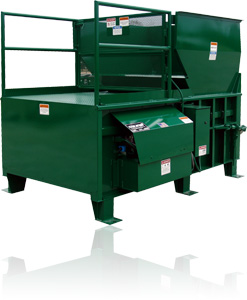Exploring the Important Role of Waste Devices in Modern Recycling Processes and Sustainable Garbage Disposal Practices
The essential role of waste devices in modern recycling procedures underscores its significance in attaining sustainable waste disposal techniques. Advanced systems, such as automated sorting modern technologies and compactors, not only enhance performance however also play a pivotal duty in minimizing contamination rates and enhancing product healing. As the demand for even more lasting solutions expands, it is vital to take a look at exactly how these innovations adjust to advancing difficulties within waste management. What ingenious advancements are on the perspective that could better transform these procedures?
Relevance of Waste Equipment
Why is waste devices critical in the recycling process? The efficiency of reusing procedures pivots substantially on the schedule and performance of waste devices. This category of machinery and tools is crucial for the efficient collection, processing, and sorting of recyclable materials. By helping with the separation of products, waste devices lessens contamination, which is extremely important in ensuring top notch recyclables that can be reestablished right into making cycles.
Additionally, waste equipment enhances functional efficiency and safety within reusing facilities. Advanced equipment, such as shredders and balers, allows for the fast handling of large volumes of waste, decreasing labor costs and processing time. On top of that, using specialized devices reduces the danger of injury among workers by automating dangerous tasks.
Furthermore, the environmental impact of recycling is amplified by effective waste equipment. By maximizing the reusing procedure, facilities can considerably minimize the volume of waste sent to garbage dumps, therefore adding to sustainability efforts. Finally, waste devices is not merely an ancillary component of recycling; it is a basic element that drives performance, safety and security, and ecological stewardship in contemporary waste administration methods.
Types of Waste Devices
The efficiency of reusing operations is closely connected to the particular sorts of waste tools used at the same time. baler rental. Numerous categories of devices are integral to the collection, arranging, processing, and transport of recyclable products
First of all, collection equipment, such as waste collection vehicles and containers, is necessary for collecting recyclables from numerous sources, consisting of residential, business, and industrial areas. When accumulated, arranging equipment, including conveyor belts, shredders, and magnetic separators, plays an essential function in differentiating various product types, making certain that impurities are removed before processing.
Processing devices, such as balers and compactors, better prepares materials for recycling by compressing and packaging them into workable sizes. This not only enhances room yet additionally boosts transport performance. Additionally, specialized machinery like granulators and extruders is utilized for changing products right into recyclable types, specifically in plastic recycling.

Function in Recycling Procedures
In recycling processes, the duty of waste devices is crucial in guaranteeing performance and effectiveness at every stage. This devices encompasses an array of machinery created to handle, procedure, and type materials that are to be reused. The initial phase entails collection and transport, where compactors and balers play an essential role in enhancing the quantity of materials for transit, therefore reducing operational expenses.
When at the reusing facility, shredders and crushers enter into play, damaging down products right into manageable sizes appropriate for more handling. These devices add to improving the area of recyclables, promoting more reliable material recuperation. Arranging systems, equipped with sophisticated innovations such as conveyor belts and optical sensing units, guarantee that products are precisely divided by kind, thereby maximizing the quality of the recycled output.
Additionally, specialized equipment for handling details products-- check my site such as glass, plastics, and steels-- makes certain that each kind is taken care of in the most effective manner. Overall, the integration of advanced waste equipment into the recycling process not only simplifies procedures however likewise substantially adds to the total healing rates of important materials, underscoring its view it important role in contemporary reusing initiatives.
Effect On Sustainable Practices
Through the efficient procedure of waste equipment, reusing processes significantly enhance lasting practices throughout different sectors. By simplifying sorting and handling features, progressed waste tools reduces contamination in recyclable products, thereby enhancing the top quality of recycled output.

Furthermore, the assimilation of wise technologies in waste monitoring systems enables real-time data monitoring and analysis, bring about more informed decision-making and functional performances. As sectors progressively prioritize sustainability, the function of waste devices comes to be vital fit methods that align with environmental stewardship and regulative conformity. Ultimately, the synergy in between waste equipment and recycling processes plays an essential function beforehand broader sustainability goals throughout communities and markets alike.
Future Fads in Waste Administration
Arising fads in waste monitoring are positioned to improve the landscape of reusing and source recuperation considerably. Smart waste bins furnished with sensing units can check waste degrees in real-time, optimizing collection routes and reducing functional prices.
Additionally, the round economic situation version is obtaining grip, advertising the concept of recycling materials as opposed to throwing away them. This fad urges businesses to develop products with end-of-life considerations in mind, driving the need for innovative waste management solutions.
Furthermore, public awareness and interaction in sustainability methods are on the rise, leading to increased participation in reusing programs. Government plans are additionally advancing, with stricter policies on waste disposal and incentives for lasting techniques.
As these fads merge, they develop a more efficient, lasting waste monitoring system that not just reduces environmental effect however likewise promotes economic click here now growth via source recovery and development in waste equipment. The future of waste monitoring looks encouraging, driven by innovation and a dedication to sustainability.
Conclusion
In final thought, waste tools plays a crucial role in enhancing the effectiveness and efficiency of contemporary reusing procedures. As waste monitoring proceeds to develop, the relevance of ingenious waste devices will certainly stay vital in accomplishing sustainability objectives and attending to the obstacles of source deficiency.